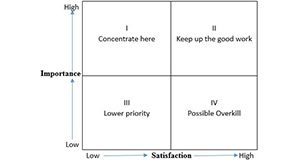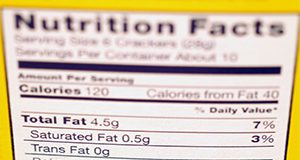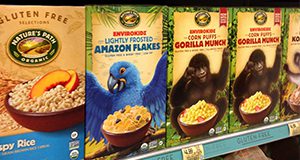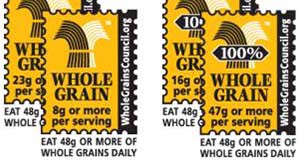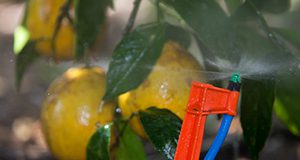The second document in a series of three about using importance-performance analysis to prioritize Extension resources, this four-page article covers how to collect data and use them to generate visual plots. IPA data plots are attractive and easy-to-understand visual maps that display importance and satisfaction scores for certain attributes. Written by Anil Kumar Chaudhary and Laura A. Warner and published by the Department of Agricultural Education and Communication.
http://edis.ifas.ufl.edu/wc251
Author: Allison Nick
Prioritizing Extension Resources Using Perceived Importance and Satisfaction: An Underutilized Approach
This is the first article in a series of three on using Importance-performance analysis to prioritize Extension resources. Importance-performance analysis, or IPA, measure how people feel about certain chracteristics of a place, issue, or program. Extension professionals can use IPA to make decisions and prioritize resources by understanding how clients rate the importance of and satisfaction with specific attributes of a program or facility. This three-page fact sheet explains IPA and how to use it. Written by Laura A. Warner and Anil Jumar Chaudhary and published by the Department of Agricultural Education and Communication.
http://edis.ifas.ufl.edu/wc250
Facts about Fats and Oils
Fats and oils are important for good health. Fats provide your body with energy while oils are needed in the diet in small amounts because they are a major source of Vitamin E, which has antioxidant properties. This four-page fact sheet describes the different types of fats and oils and tips for choosing the healthiest types.Written by Tiffany N. Stodtko and Wendy J. Dahl and published by the Food Science and Human Nutrition Department.
http://edis.ifas.ufl.edu/fs281
Health Benefits of Olive Oil and Olive Extracts
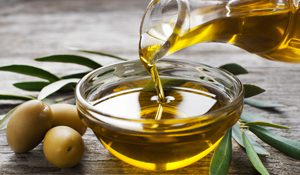
Olive oil is known for its health benefits. There are three common types of olive oil, namely virgin olive oil, refined olive oil, and olive pomace oil. Each has its unique processing method, flavor characteristics, composition, and food applications. This five-page fact sheet describes each of the types of olive oil and their pros and cons. Written by Wendy J. Dahl, Michael A. Tandlich, and Julie England and published by the Food Science and Human Nutrition Department.
http://edis.ifas.ufl.edu/fs282
Huanglongbing (HLB; citrus greening) and Nutrient Deficiency Identification
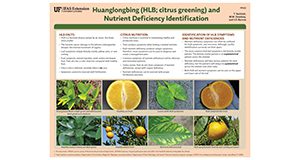
Huanglongbing (HLB) is a bacterial disease that is spread by an insect, the Asian citrus psyllid. This two-page fact sheet, which is best viewed as a PDF, http://edis.ifas.ufl.edu/pdffiles/PP/PP32800.pdf, explains how to tell the difference between HLB symptoms and symptoms from nutrient deficiencies. Written by T. Vashisth, M.M. Dewdney, and J.D. Burrow and published by the Plant Pathology Department.
http://edis.ifas.ufl.edu/pp328
De Compras para la Salud: Cereales de Desayuno
It is no secret that breakfast is an important meal. Eating breakfast provides you with physical and mental energy to start the day, along with vitamins and minerals. Cereal is a quick, versatile, and budget-friendly breakfast choice. The benefits of eating a healthy cereal include increased fiber intake and lower body weight. But navigating the cereal aisle at your local grocery store can be an overwhelming experience. This three-page fact sheet is the Spanish language version of Shopping for Health: Breakfast Cereals, http://edis.ifas.ufl.edu/fs274. Written by Jenna Seckar and Wendy J. Dahl and published by the Food Science and Human Nutrition Department.
http://edis.ifas.ufl.edu/fs280
De Compras para la Salud: Aperitivos
At first glance, you might think that snacking should be avoided because of the extra calories they can add to your diet. However, studies have shown there may be benefits when healthy snack choices are made. Read this article to learn about the benefits of healthy snacks and to learn healthy snack shopping tips. Includes recipes for homemade crispy kale chips and peanut butter and jelly yogurt. This four-page fact sheet is the Spanish langauge version of FS279 Shopping For Health: Snack Foods. Written by Carley Rusch and Wendy J. Dahl and published by the Food Science and Human Nutrition Department.
http://edis.ifas.ufl.edu/fs279
Citrus Nutrition UF/IFAS Grower Trials (Pamphlet)
Interested in learning more about citrus nutrition grower trials? This two-page pamphlet provides information on the goals, objectives, benefits, and considerations of the trials as well as specific information about trials being held from 2015-2017. The pamphlet also contains a sign up form for the trials. Written by Tripti Vashisth and Jamie D. Burrow and published by the Horticultural Sciences Department.
http://edis.ifas.ufl.edu/hs1283
Frequently Asked Questions About Huanglongbing (HLB; citrus greening) for Homeowners
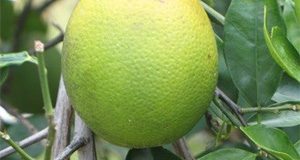
Huanglongbing (HLB), also known as citrus greening, is a serious bacterial disease that affects citrus in Florida. Florida residents enjoy growing citrus for a variety of reasons, but growing citrus in today’s disease climate is not an easy task. This seven-page document is designed to help Master Gardeners and homeowners answer commonly asked questions about HLB. Written by Brooke L. Moffis, Jamie D. Burrow, Megan M. Dewdney, and Michael E. Rogers and published by the Plant Pathology Department.
http://edis.ifas.ufl.edu/pp326
Huanglongbing (HLB; citrus greening) Leaf and Fruit Symptom Identification
Huanglongbing (HLB), commonly known as citrus greening, is a bacterial disease that affects all citrus varieties. This two-page fact sheet describes the leaf and fruit symptoms of HLB. Written by Jamie D. Burrow and Megan M. Dewdney and published by the Department of Plant Pathology.
http://edis.ifas.ufl.edu/pp327
Understanding Dietary Supplements
More than half of adults in the United States take at least one dietary supplement. It is important to know in what situations supplements may be effective for improving health and wellness. This three-page fact sheet describes dietary supplements, when to use them, and how to evaluate their safety and efficacy. Written by Daniel Staub and Anne Mathews and published by the Food Science and Human Nutrition Department.
http://edis.ifas.ufl.edu/fs278
Encouraging Landscape Water-Conservation Behaviors: Applying Audience Segmentation to Water Conservation Activities in the Landscape—Defining Segments of the Florida Homeowner Audience and Implications for Extension Programming
This is the second publication in a series focusing on encouraging water conservation among Florida residents who use irrigation in their home landscapes. This six-page fact sheet examines one approach to segmenting Florida residents who use irrigation in the home landscape. It also describes how segmentation can be used to encourage water conservation practices. Written by Laura A. Warner, Emmett Martin, Alexa J. Lamm, Joy N. Rumble, and Esen Momol and published by the Department of Agricultural Education and Communication.
http://edis.ifas.ufl.edu/wc200
Attitudes and Perceptions of Agricultural Water Use in Florida Expressed by the General Public and Local Officials
The use of water has become increasingly contentious because an increased population is sharing a decreasing amount of water. Water remains Florida’s most plentiful natural resource but is at risk as the agriculture industry and Floridians demand more water for a variety of uses. This four-page fact sheet discusses the media’s influence on perceptions of agricultural water use, the measurement of attitudes and perception towards agricultural water use, and ways to educate the general public and local officials on this issue. Written by Courtney T. Owens, Alexa J. Lamm, and Ricky W. Telg, and published by the Department of Agricultural Education and Communication.
http://edis.ifas.ufl.edu/wc248
Creciendo Papas en el Jardín de su Hogar en la Florida
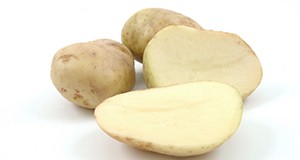
The Irish potato is a cool-season crop. A recently grown and harvested potato exhibits different flavor profiles from one that has been in storage or on a grocery shelf for an extended period. For example, in storage, the starches in potatoes convert to sugars, resulting in a less desirable texture and taste. “New” potato flavor can be achieved in the home garden by following a few growing recommendations. This is ten-page fact sheet is the Spanish language version of HS933 Growing Potatoes in the Florida Home Garden. Written by Christian T. Christensen, Joel Reyes-Cabrera, Lincoln Zotarelli, Wendy J. Dahl, Doug Gergela, Jeffery E. Pack, James M. White, and Chad M. Hutchinson.
http://edis.ifas.ufl.edu/hs1282
Zika Vector Control for the Urban Pest Management Industry
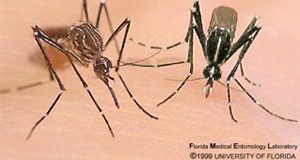
Zika is a mosquito-transmitted virus that has recently spread to the Americas. Zika virus (ZIKV) was discovered in 1946 in Africa where it was isolated from a Rhesus monkey in the Zika forest of Uganda. In 2007, a disease outbreak occurred on the Yap islands in Micronesia, and in 2013, an outbreak occurred in French Polynesia. In 2015, a large outbreak occurred in Brazil, and ZIKV has since spread through the Americas. As of April 18, 2016, 15 counties in the state of Florida had reported travel-associated Zika cases. This seven-page fact sheet provides an overview of ZIKV, including its incidence and distribution, transmission and symptoms, and the connection between zika virus and infant microcephaly. This article also explains the biology and identification of the mosquito that vectors the virus with a focus on how to manage the vector using inspection, larviciding, adulticiding, monitoring, and personal protective equipment. Written by Casey Parker, Roxanne Connelly, Dale Dubberly, Roberto Pereira, and Philip Koehler and published by the Entomology and Nematology Department.
http://edis.ifas.ufl.edu/in1131
Muestreo por Golpeo para el Psilido Asiatico de los Citricos (PAC). Hoja de campo
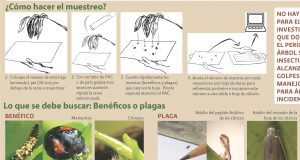
This field sheet provides information on Tap sampling for Asian Citrus Psyllid (ACP). Monitoring ACP populations is an important tool in the integrated management of citrus greening. The most efficient way to estimate field populations of this insect is by monitoring adults. Tap sampling has proven to provide data needed to make informed decisions for managing this insect pest. This two-page field sheet is the Spanish version of IN1116 TAP Sampling for Asian Citrus Psyllid (ACP) Field Sheet. Written by Phil Stansly, and published by the Entomology and Nematology Department.
http://edis.ifas.ufl.edu/in1122
Metsulfuron-Methyl-Containing Herbicides Potentially Damaging Ornamentals when Applied to Turfgrass
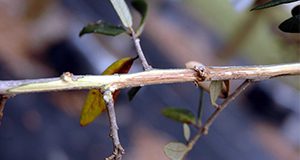
Metsulfuron-methyl, also known as MSM, is an herbicide that is used to control broadleaf weeds and certain grass weeds. It provides effective control of some of the most problematic turfgrass weeds, such as wild garlic, Florida betony, dollar weed, and small Virginia buttonweed. Metsulfuron-methyl is absorbed by plant foliage, so if landscape plants come into contact with the spray or drift they can be injured. This four-page fact sheet describes the potential problems with metsulfuron herbicides, the areas most subsceptible to damage, how to diagnose injury, and how to reduce damage. Written by Chris Marble, Jason Smith, Timothy K. Broschat, Adam Black, Ed Gilman, and Celeste White and published by the School of Forest Resources and Conservation Department.
http://edis.ifas.ufl.edu/fr400
Pond Apple: A Tree Species Adapted to Salt Stresses
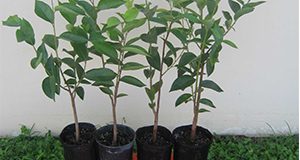
Soil salinity is a naturally ocurring problem for growers, gardeners, and homeowners in Florida. As sea-levels rise, seawater intrusion causes salt stress to plants grown in coastal lowland areas. This three-page fact sheet introduces a salt-tolerant species, pond apple (Annona glabra L.), which has great potential to be used in high-salinity coastal landscapes. Written by Guodong Liu, Yuncong Li, Kimberly Moore, and Kim Gabel and published by the Horticultural Sciences Department.
http://edis.ifas.ufl.edu/hs1281
Understanding Ag Awareness Programming throughout UF/IFAS Extension: Supporting Citizen Awareness of Food Systems and the Environment

Florida Extension agents around the state are working to increase public agricultural awareness (Ag Awareness). This five-page fact sheet outlines FLorida’s recent Extension efforts in agricultural awareness and highlight future directions to coordinate and strengthen this work, offering ideas for best practices while avoiding unnecessary duplication. Written by Joy N. Rumble, Kathryn A. Stofer, and Libbie Johnson and published by the Department of Agricultural Education and Communication.
http://edis.ifas.ufl.edu/wc168
Starting a Community Garden
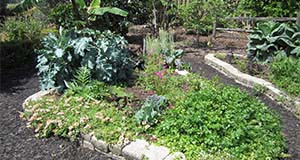
A community garden is a great way to unite a group of people in a common goal. In addition to providing fresh herbs, vegetables, and fruit, community gardens can also increase self-esteem, beautify a neighborhood, and create and opportunity for socializing and improving health. This four-page fact sheet outlines the importance of community gardens and how to develop and manage a community garden. Written by Adrian Hunsberger, Eva C. Worden, and John McLaughlin, and published by the Environmental Horticulture Department.
http://edis.ifas.ufl.edu/ep124
